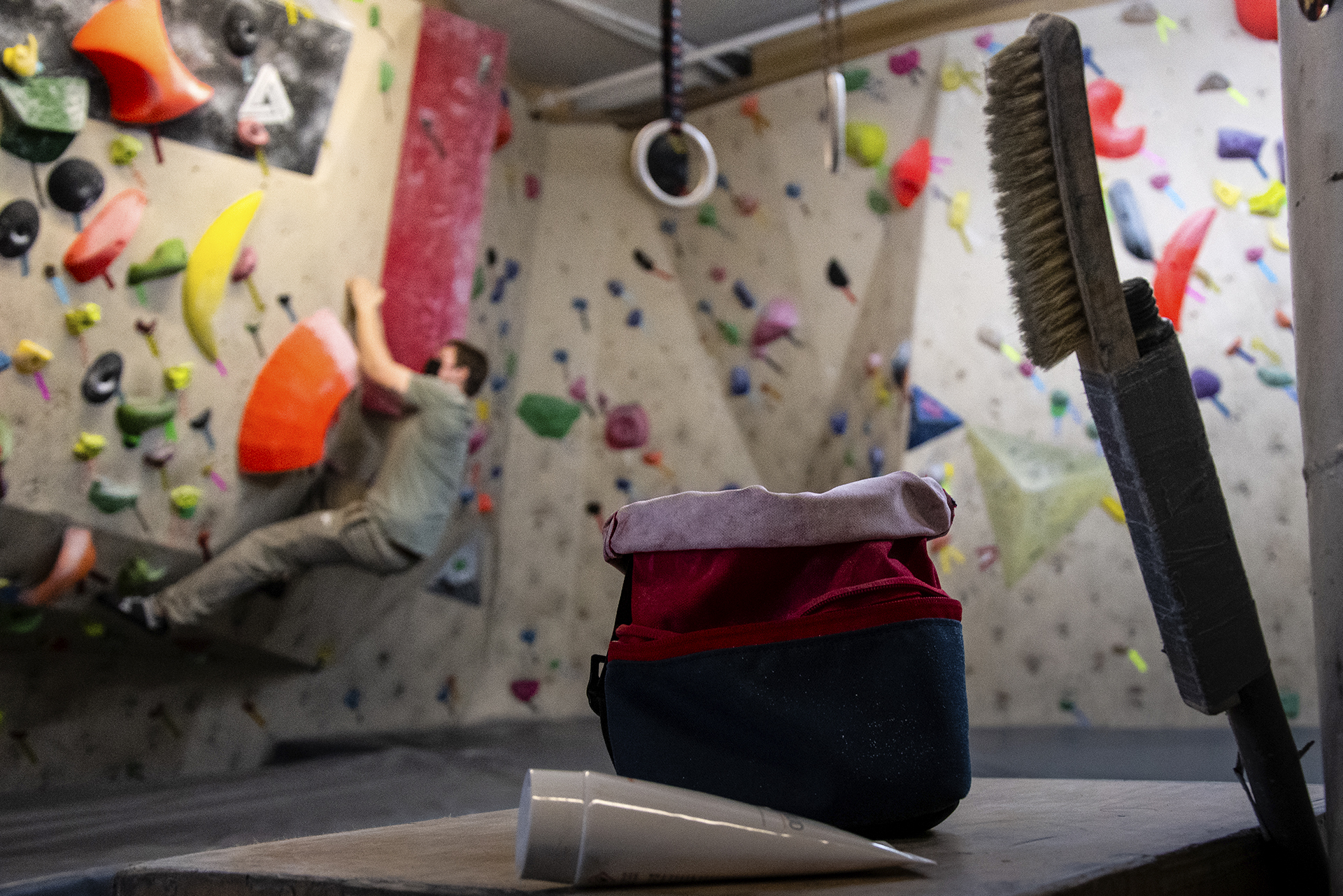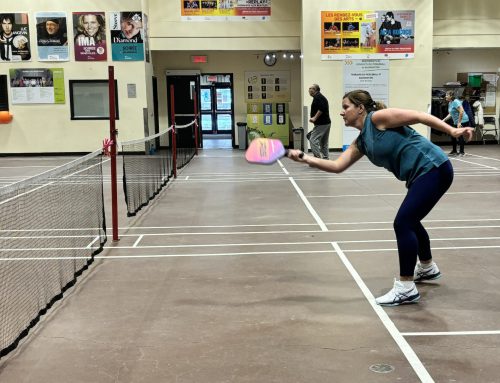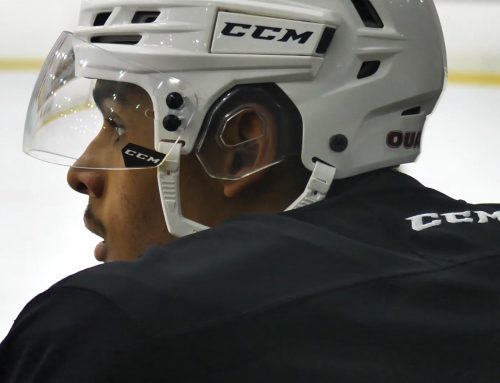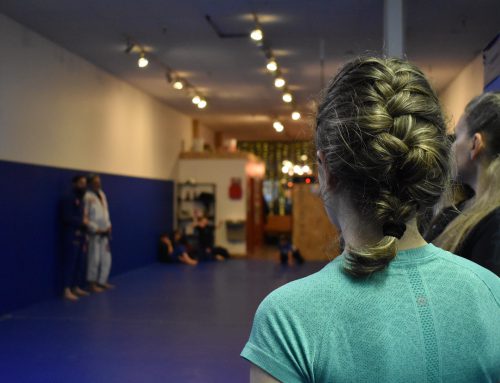BY Jad Abukasm & Ora Bar
Burning forearms, fingers cramped up and shoulders numb, Mikaël Aubin-Jobin waves his hands in the air, mirroring the moves he’s been practicing for the past hour. He’s failed to climb this boulder for a week but is not about to give up yet.
Chalking up his fingers and tightening his shoes, he eyes the very last sharp hold before he reaches the top. Getting in position, he feels his arms heavy, and beads of sweat dripping down his forehead. His friends cheer as he leaps and swings as he reaches the top. He’s done it. He just climbed one of the hardest routes he’s ever tried—on the corner of Acadie and Chabanel in Saint-Laurent, right in the heart of Montreal.
“I know I was very proud of myself, but honestly, I was already thinking of how I could have done it better,” Aubin-Jobin says. “It got me even more excited to try new problems.”
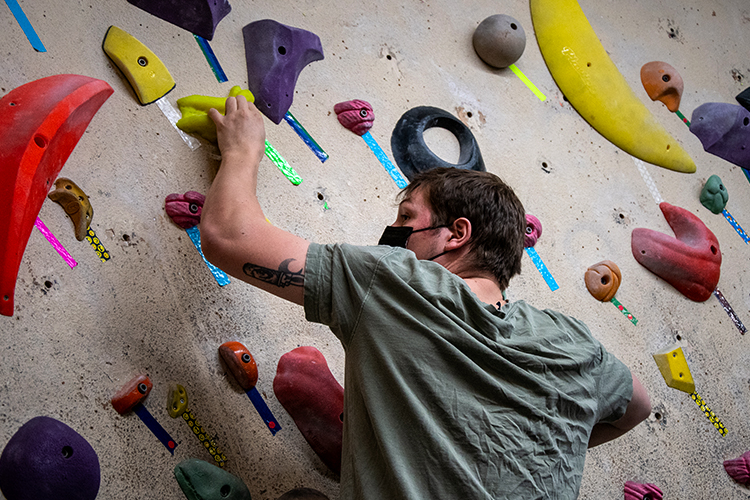
Aubin-Jobin climbs up a new problem at Shakti bouldering gym. Photo by Jad Abukasm.
One of those new problems is bouldering.
Bouldering is a sub-discipline of rock-climbing requiring climbers to solve a strength and tactical problem using a few moves to climb up a two-and-a-half-meter tall wall—no help, no ropes. And it’s most popular indoors.
“I heard about bouldering four years ago, but I couldn’t get my head around the idea of trying it for myself,” he says. “It was only when a bunch of my friends told me to join them, that I went ‘Ah! Why didn’t I think of it before?’”
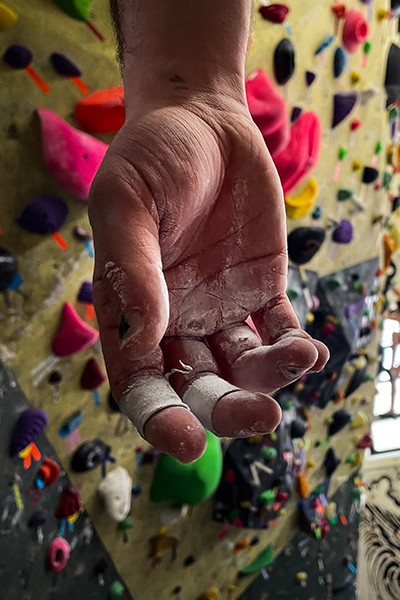
A rock climber overcomes a cut by taping it. Cuts and chafing are everyday events for climbers, requiring extra skin and hand care during and between climbing sessions. Photo by Jad Abukasm.
As a fan of problem-solving games and an active person, bouldering seemed like the right fit.
“I came to Montreal two years ago and I didn’t know anyone or try anything,” he says. “I love cycling but waiting for spring to do any kind of sport is ridiculous. My first time climbing, when one of the co-owners of the gym told me that it was basically like solving a problem and figuring out the way up, I immediately fell in love with it,” he continues while dreamily waving his hands, recreating the latest boulder he climbed.
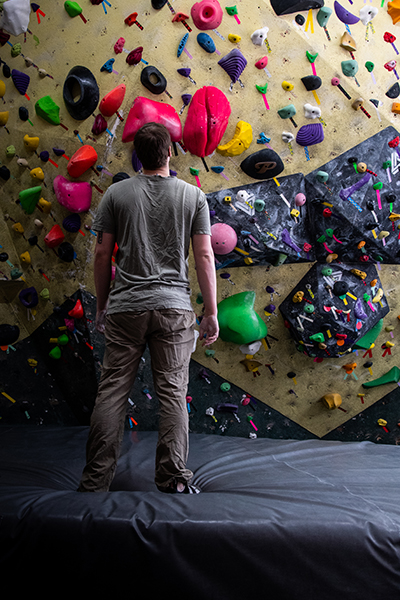
Aubin-Jobin analyzes a new bouldering problem before climbing. Photo by Jad Abukasm.
He also found it very convenient since he doesn’t have to depend on the weather to climb, unlike cycling.
Aubin-Jobin is not the only one to enjoy the sport in Quebec. Since 2017, Quebec has experienced a drastic increase in popularity in all rock-climbing disciplines—especially in bouldering.
Matthieu Des Rochers, sports director at the Fédération Québécoise de la Montagne et de l’Escalade (FQME), says the number of indoor climbing gyms doubled in less than five years and entries to FQME-hosted events increased at an annual rate of up to 30 per cent.
“This really shows a craze for the sport and not just in Quebec,” Des Rochers says. “It’s been happening in the rest of Canada, it’s the same in the United States, it’s the same everywhere in Europe and Asia. It’s a sport that really earned its spot on the international scene like we saw in the Olympics.”
Rock climbing has been part of Quebec society for over 50 years. Yet, it only crossed the minds of many while confined to four plain walls. Video by Ora Bar.
What sets bouldering apart from other rock climbing sports is its easy accessibility. Traditional styles of rock climbing require tall walls with rope systems, and climbers must attend safety and anchoring technique classes in order to start climbing.
“When we choose bouldering, we reduce all these costs both for the infrastructure and owners but also for climbers,” Des Roches says. “It’s the most accessible of climbing sports because you don’t need safety classes, never-ending equipment spending, and certifications. You get there, put climbing shoes on, a little bit of chalk and all you do is climb.”
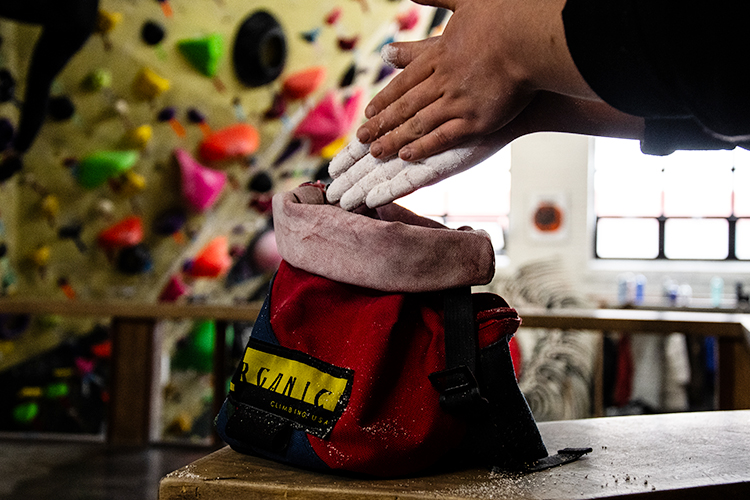
A rock climber chalks up their hand before attempting an ascent. Chalk is one of the very few items a boulderer requires to practice the sport. Photo by Jad Abukasm.
Quebec once lagged compared to other regions of the world like Europe in terms of rock-climbing popularity. But Charon says that Montreal had now been a rock-climbing hub for decades with amazing gyms scattered all over the city.
Rock-climbing got a boost when it became an official Olympics sport in 2017. However, leisure and recreation expert Steven Henle believes bouldering has a long way to go before it can truly be called a ‘trend.’
“I think the sport is small in participation numbers, so any spike in participation would look like a big percentage increase, but the actual number of people participating is still relatively small,” Henle says. “In Quebec, the harsh winter would certainly impact people who want to climb to pick an indoor facility over an outdoor climb, so they are not negatively impacted by bad weather.”
This became so clear to gym owners and rock climbers that nowadays, three out of four rock climbing facilities in Quebec are bouldering gyms.
A look at the bouldering-exclusive gyms in Montreal. Map by Jad Abukasm.
Nicolas Charon, co-owner of Bloc Shop, realized this right before the spike in popularity. Having worked at Allez-Up, a climbing gym and staple in the Montreal rock-climbing community, he decided to open one of the first bouldering-exclusive gyms in Montreal in 2014 and saw the spike in popularity firsthand.
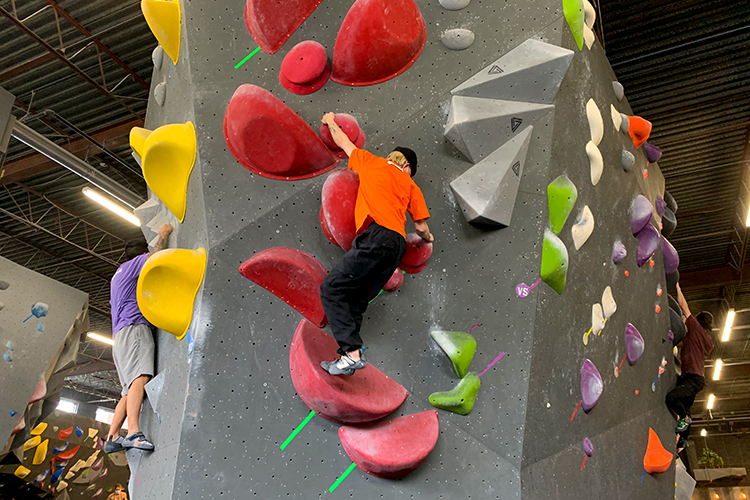
A climber attempts an ascent at BlocShop bouldering gym. Photo by Ora Bar.
“Within the first year, our foot traffic exploded,” Charon says. “It didn’t take more than a year and half and we already had to expand to meet the demand. So, we added another 10,000 square feet to our already existing gym that was 10,000 square feet, and we opened our second location in Hochelaga which is 18,000 square feet.”
Charon says he believes that rock-climbing will keep growing. He hopes that changes like Quebec officially recognizing the sport will help change the view of rock-climbing as a marginal sport and attract more and more new climbers.
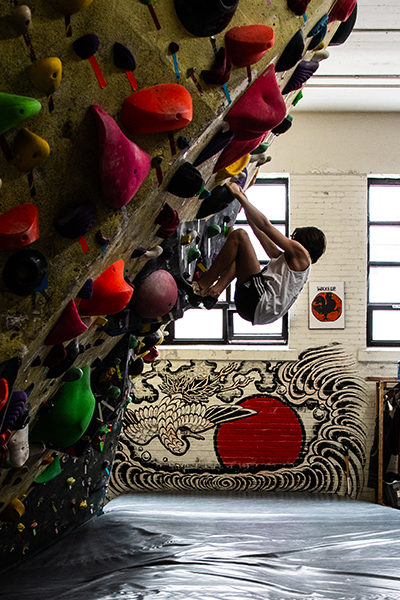
A boulderer hangs on the wall while they look where to place their feets for the next move. Photo by Jad Abukasm.
For Aubin-Jobin, he is eager to dive deeper into the climbing community and hopes for the sport to grow even larger.
“I believe bouldering is therapeutic,” he says. “Not only did it help me get back into sports, but it’s a way to better understand and listen to your body and mind. It’s helped me a lot, and I hope it will help others as well.”
